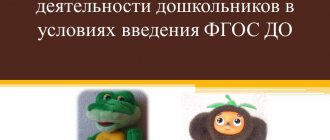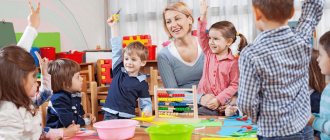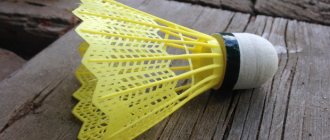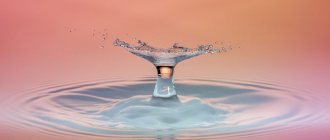E AESTHETIC EDUCATION OF PRESCHOOL CHILDREN. - presentation
E ATHETIC EDUCATION OF PRESCHOOL CHILDREN
The importance of aesthetic education in the context of the comprehensive development of a child’s personality Aesthetic education is the most important aspect of raising a child. It contributes to the enrichment of sensory experience, the emotional sphere of the individual, affects the knowledge of the moral side of reality, increases cognitive activity and even affects physical development.
E AESTHETIC EDUCATION Nature Work Social life Everyday life Art Artistic education
THE CONCEPT OF AESTHETIC EDUCATION Aesthetic education is a purposeful process of formation of a creatively active personality, capable of perceiving, feeling, appreciating the beautiful, tragic, comic, ugly in life and art, living and creating “according to the laws of beauty.”
GOALS OF AESTHETIC EDUCATION 1. Development of the individual’s readiness to perceive, master, evaluate aesthetic objects in art and reality 2. Improvement of aesthetic consciousness 3. Inclusion in harmonious self-development 4. Formation of creative abilities in the field of artistic, spiritual, physical culture.
TASKS OF AESTHETIC EDUCATION The first group of tasks is aimed at developing children’s aesthetic attitude towards the environment. The second group of tasks is aimed at developing artistic skills in the field of various arts. The tasks of aesthetic education of children are mutually determined and closely intertwined.
O IMPLEMENTATION OF THE TASKS OF AESTHETIC EDUCATION, implementation of an individual approach to children; favorable environment (room, clothing, toys); maintaining works of art in everyday life; personal initiative and desire of children.
FIRST JUNIOR GROUP It is necessary to look at illustrations to works of children's literature with children. Introduce children to folk toys appropriate for the age of preschoolers.
FIRST JUNIOR GROUP To develop children's interest in the environment. While walking, draw children’s attention to beautiful plants and site equipment that is convenient for children to play and relax.
FIRST JUNIOR GROUP Arouse children's interest in activities with pencils, brushes and paints, and clay. Cultivate an interest in music, a desire to listen to music.
IN THE SECOND JUNIOR GROUP It is necessary to prepare children to perceive works of art. To introduce elementary means of expressiveness in different types of art (color, sound, shape, movements, gestures), to lead to the distinction between different types of art through artistic image
IN THE SECOND JUNIOR GROUP To develop interest in visual arts. Evoke a positive emotional response to the beauty of nature and works of art.
IN THE SECOND JUNIOR GROUP To cultivate emotional responsiveness to music.
C MIDDLE GROUP
In the middle group, children are introduced to architecture. Give children the idea that the houses they live in are architectural structures.
C MIDDLE GROUP At this age, it is recommended to organize the first visit to the museum and puppet theater. Room-museum “Russian Izba” Novoromanovo
FROM HIGHER PRESCHOOL AGE In older preschool age, one should continue to develop an interest in art. To consolidate knowledge about art as a form of creative activity of people, about types of art. Expand children's knowledge about fine arts
WITH HIGH PRESCHOOL AGE Involve children of older preschool age in the design of exhibitions in the group, kindergarten, and in the organization of play corners. Develop the ability to notice shortcomings in your work and correct them.
FROM HIGH PRESCHOOL AGE Continue to introduce children to musical culture. Teach children to play musical instruments.
MEANS OF AESTHETIC EDUCATION - Aesthetics of everyday life - Nature - Art - Artistic activity
METHODS OF AESTHETIC EDUCATION OF PRESCHOOL CHILDREN Each group of tasks of aesthetic education of preschool children has its own methods: Methods of introducing children to art Display Observation Explanation Example of an adult Analysis
METHODS OF AESTHETIC EDUCATION OF PRESCHOOL CHILDREN Methods of developing skills in artistic activity - Demonstration - Method of search situations - Explanation - Exercise
FORMS OF ORGANIZATION OF AESTHETIC EDUCATION OF PRESCHOOL CHILDREN 1. Artistic activity. 2. Organized classes. 3. Excursions. 4. Entertainment, theatrical games. 5. Holidays. 6. Design activity.
DEVELOPMENT ENVIRONMENT
NATURE
ART
X ARTISTIC ACTIVITY
THE ROLE OF THE FAMILY IN AESTHETIC EDUCATION Only with the unity of the influence of the kindergarten and the family is it possible to fully implement the tasks of aesthetic education.
The teacher helps the family create the necessary conditions for the proper aesthetic education of children.
T CREATIVE COMPONENTS
Thank you for your attention!
Presentation Aesthetic education of preschoolers presentation for a lesson on the topic
Slide 1
Aesthetic education
Slide 2
Aesthetic education is a purposeful, systematic influence on a person for the purpose of his aesthetic development, i.e. formation and improvement of aesthetic consciousness, relationships and aesthetic activity of the individual. Experts distinguish 3 groups of means of aesthetic education 1- Art (fine arts, music, children's fiction, architecture, theater). 2- Surrounding life, nature, aesthetic development environment (decoration of the institution’s premises). 3- Artistic activity – activities related to types of art (theatrical games; artistic speech, musical, visual activities).
Slide 3
Forms of organizing artistic activity - classes, including integrated ones, where educational tasks are realized by means of different types of art (tasks are combined on certain topics, or based on the leading means of artistic and figurative expressiveness, for example, “rhythm” can be conveyed both in dance and in decorative pattern, and in the expressive execution of the poem); - independent artistic activity; - artistic work; — theatrical games; — holidays, entertainment; - excursions .
Slide 4
Pedagogical conditions for the implementation of the tasks of artistic and aesthetic education: 1- Taking into account the age and individual characteristics of children. 2- The relationship between the artistic and creative activities of children with all areas of educational work (familiarization with the environment, work on speech development, play). 3- Integration of various types of art and types of artistic and creative activity, promoting a deeper aesthetic understanding of reality, the formation of figurative ideas and imagination. The possibility of integration determines the commonality of the artistic means of music, painting and literature. 4- Respectful attitude towards the results of children’s creativity, wide inclusion of their works in the life of the preschool educational institution. 5- Organization of exhibitions, concerts, creation of an aesthetic development environment.
Slide 5
6- Variability of content, forms and methods of working with children in different areas of aesthetic education. 7- Ensuring continuity in artistic and aesthetic education between all age groups of the kindergarten. 8- Interaction between kindergarten and family. The artistic experience that a child receives in kindergarten encourages him to do what he loves at home. Therefore, parents should create all the conditions for their child to engage in independent creative activity, encourage his desire to take up, for example, drawing, and help organize a puppet show.
Slide 6
Classification of methods of aesthetic education of preschool children (N. A. Vetlugina) Method of persuasion The peculiarity of the method in relation to aesthetic education is that it can be used only when the perceived phenomenon is beautiful. It is important to select the most striking and impressive works of art, to create the appropriate situation and emotional mood.
Slide 7
Method of training, exercises in practical actions These are systematic exercises in artistic activity, feasible participation in the practice of transforming the immediate environment. Method of problem situations (method of creative tasks) The teacher invites the children to find ways to solve the intended plan themselves. Options for creative tasks: an image of a character from a fairy tale after listening to it (model from clay or draw); choice of materials, color combinations, shapes; inventing your own riddles and rhymes; improvisation of singing songs; creating new dance compositions. Techniques: encouraging children to make independent statements about the content, means of expression, to evaluate the performance of their own and their peers’ tasks, to make comparisons; complication of task fulfillment conditions




